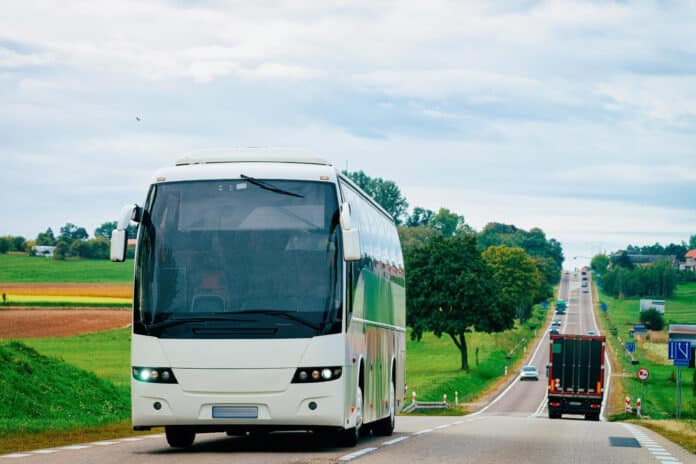Researchers at The Ohio State University have proposed a novel method for counting and tracking vehicles on public roads. It could enhance current traffic systems and help travelers get to their destinations faster.
Public transport delay has become an integral part of the daily routine for many commuters. Ever-increasing demand and congestion on existing road networks necessitate effective transportation planning, design, and management, which require accurate traffic data.
To optimize traffic flow through city streets, operating agencies deploy fixed-location and often temporary detectors, like cameras, on public roads to count passing vehicles and control urban traffic flow.
However, new research suggests that using existing bus-mounted cameras may be a better way.
Modern transit buses are already equipped with forward-facing video cameras for other safety and security purposes – and to document any accidents. In the previous study, researchers found that public transit bus fleets could be used as surveillance agents if additional sensors were installed. These mobile cameras provide much better spatial and temporal coverage than relying on sparsely and often temporarily placed sensors that don’t provide a view of many streets and roads in a city.
Such cameras are in use on campus buses at The Ohio State University – an interconnected campus that resembles a small city. Using these cameras, researchers demonstrated that they could automatically and accurately measure counts of vehicles on urban roadways, detect objects in the road, and distinguish parked vehicles from those that are moving.
“If we collect and process more comprehensive high-resolution spatial information about what’s happening on the roads, then planners could better understand changes in demand, effectively improving efficiency in the broader transportation system,” said Keith Redmill, lead author of the study, in a statement.
For their research, the team developed an AI-based algorithm to analyze footage shot by those cameras. The system works by utilizing a state-of-the-art 2D deep learning model called YOLOv4 that automatically detects and tracks objects frame by frame. It is also uniquely adept at recognizing multiple objects in a single image frame. The detected objects are then tracked with the commonly used SORT method.
The system’s results bear promise for the future of intelligent traffic surveillance. In addition to counting moving and parked vehicles, their algorithm is also able to project real-world bird’s-eye-view coordinates of the road network by taking advantage of streams of images, existing digital street maps, and GNSS satellite data.
The system was also able to detect if the bus veered off from its planned route and then report it to a map database that logs detailed information about the roadways, said Redmill.
Future work could focus on a further comprehensive evaluation of the method under more varied conditions, subsequent refinements, and the use of edge computing technologies to perform the image processing and automatic counting onboard the buses in real time.
Journal reference:
- Keith A. Redmill, Ekim Yurtsever, Rabi G. Mishalani, Benjamin Coifman, and Mark R. McCord. Automated Traffic Surveillance Using Existing Cameras on Transit Buses. Sensors, 2023; DOI: 10.3390/s23115086
